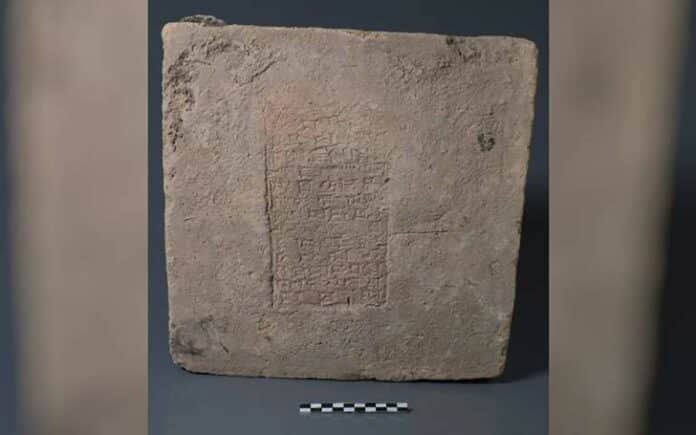It’s important to figure out how Earth’s magnetic field behaved in the past, especially during archaeological times. This helps us understand more about the field itself and other natural events. Plus, it gives us a way to date archaeological stuff accurately.
UCL scientists describe how Earth’s magnetic field changes are imprinted on iron oxide grains within ancient clay bricks. They reconstructed these changes from the names of the kings inscribed on the bricks.
The scientists studied 32 clay bricks from ancient Mesopotamian archaeological sites, now part of modern-day Iraq. They looked at the hidden magnetic information in tiny particles of iron minerals within the bricks. When these bricks were made thousands of years ago, the strength of Earth’s magnetic field affected these minerals.
Each brick had the name of the ruling king at the time it was made. Archaeologists have already estimated the time range for each king’s rule. By combining the imprinted king’s name and the magnetic strength of the iron minerals, the scientists created a historical map showing how the strength of Earth’s magnetic field changed over time.
The scientists verified the presence of an unusual event called the “Levantine Iron Age geomagnetic Anomaly.” This period, from around 1050 to 550 BCE, saw a powerful Earth’s magnetic field in the region of modern Iraq, and the reasons for this strength are not entirely clear. While signs of this anomaly have been found in China, Bulgaria, and the Azores, there was limited data from the southern part of the Middle East, and this study helped fill that gap.
Lead author Professor Matthew Howland of Wichita State University said: “By comparing ancient artefacts to what we know about ancient conditions of the magnetic field, we can estimate the dates of any artifacts that were heated up in ancient times.”
To figure out the iron oxide in the bricks, the scientists carefully chipped off small pieces from the broken parts and used a special tool called a magnetometer to measure them accurately.
This information about changes in Earth’s magnetic field gives archaeologists a new way to figure out the age of some ancient things. They measured the strength of the iron oxide in items that were heated and then compared it to what we know about Earth’s magnetic field in the past. This method provides a more detailed timeframe than radiocarbon dating, which only gives an estimate within a few hundred years.
Another good thing about using this method to date artifacts is that it helps historians be more specific about the times when some ancient kings ruled. Even if we know how long they ruled, there has been disagreement among archaeologists about the exact years they started ruling because historical records are sometimes incomplete. The scientists discovered that their technique matched what archaeologists call the “Low Chronology,” helping to clear up these uncertainties.
The scientists also discovered something interesting in five samples from when Nebuchadnezzar II was king (from 604 to 562 BCE). The Earth’s magnetic field changed a lot in a short time. This supports the idea that the magnetic field’s strength can quickly spike up and down.
Co-author Professor Lisa Tauxe of the Scripps Institution of Oceanography (US) said: “The geomagnetic field is one of the most enigmatic phenomena in earth sciences. The well-dated archaeological remains of the rich Mesopotamian cultures, especially bricks inscribed with names of specific kings, provide an unprecedented opportunity to study changes in the field strength in high time resolution, tracking changes that occurred over several decades or even less.”
Journal Reference:
- Matthew D. Howland, Lisa Tauxe, et al. Exploring geomagnetic variations in ancient Mesopotamia: Archaeomagnetic study of inscribed bricks from the 3rd–1st millennia BCE. Proceedings of the National Academy of Sciences. DOI: 10.1073/pnas.2313361120
